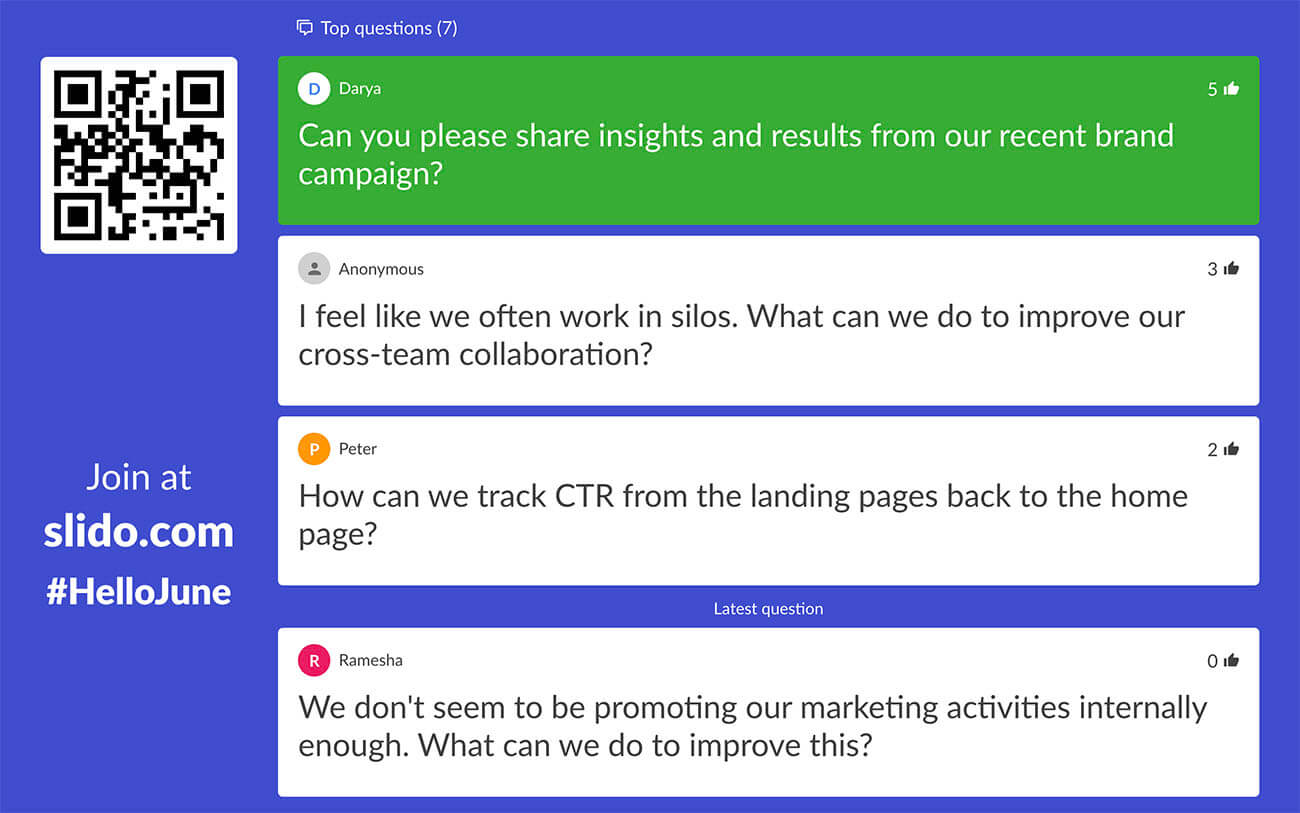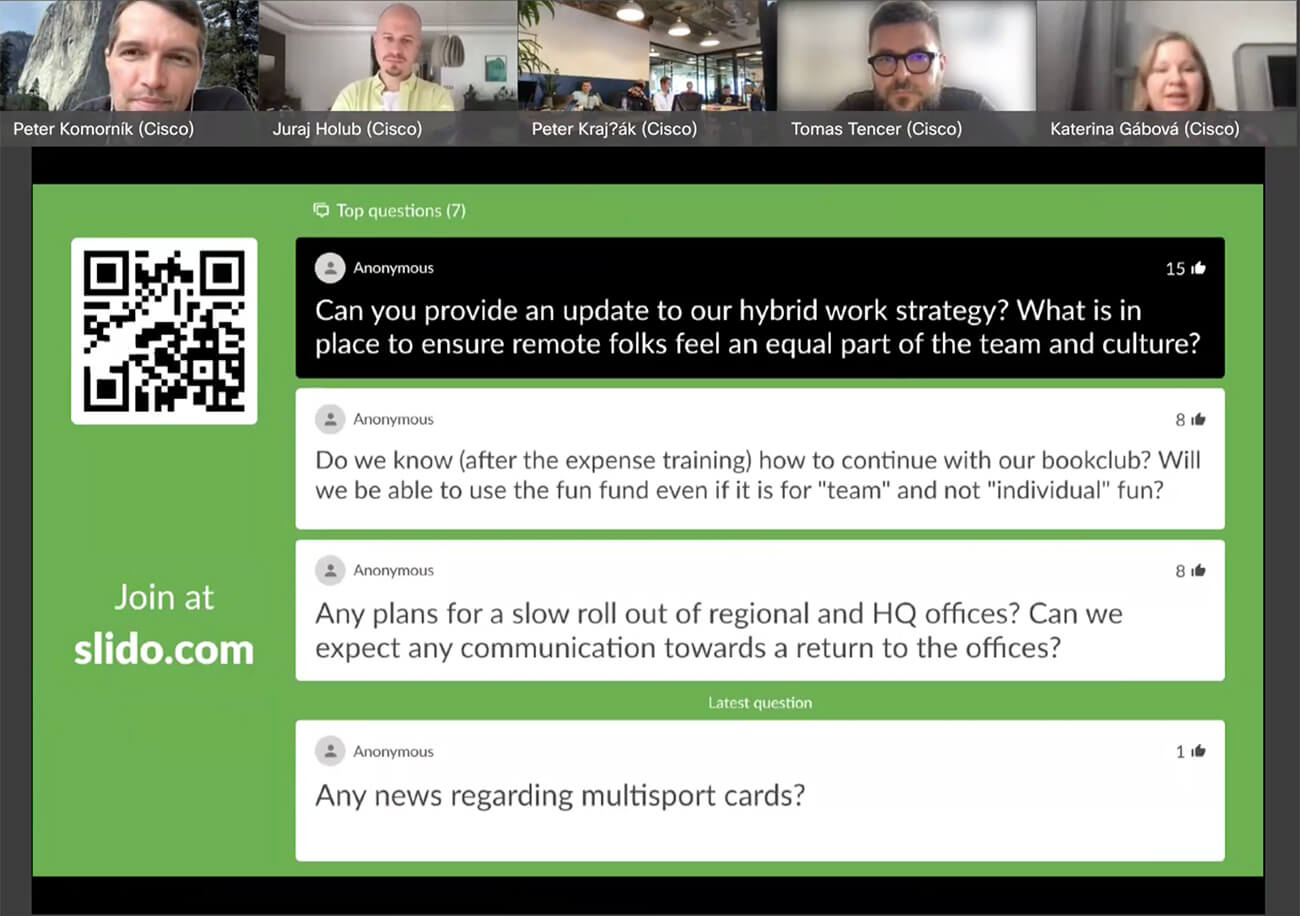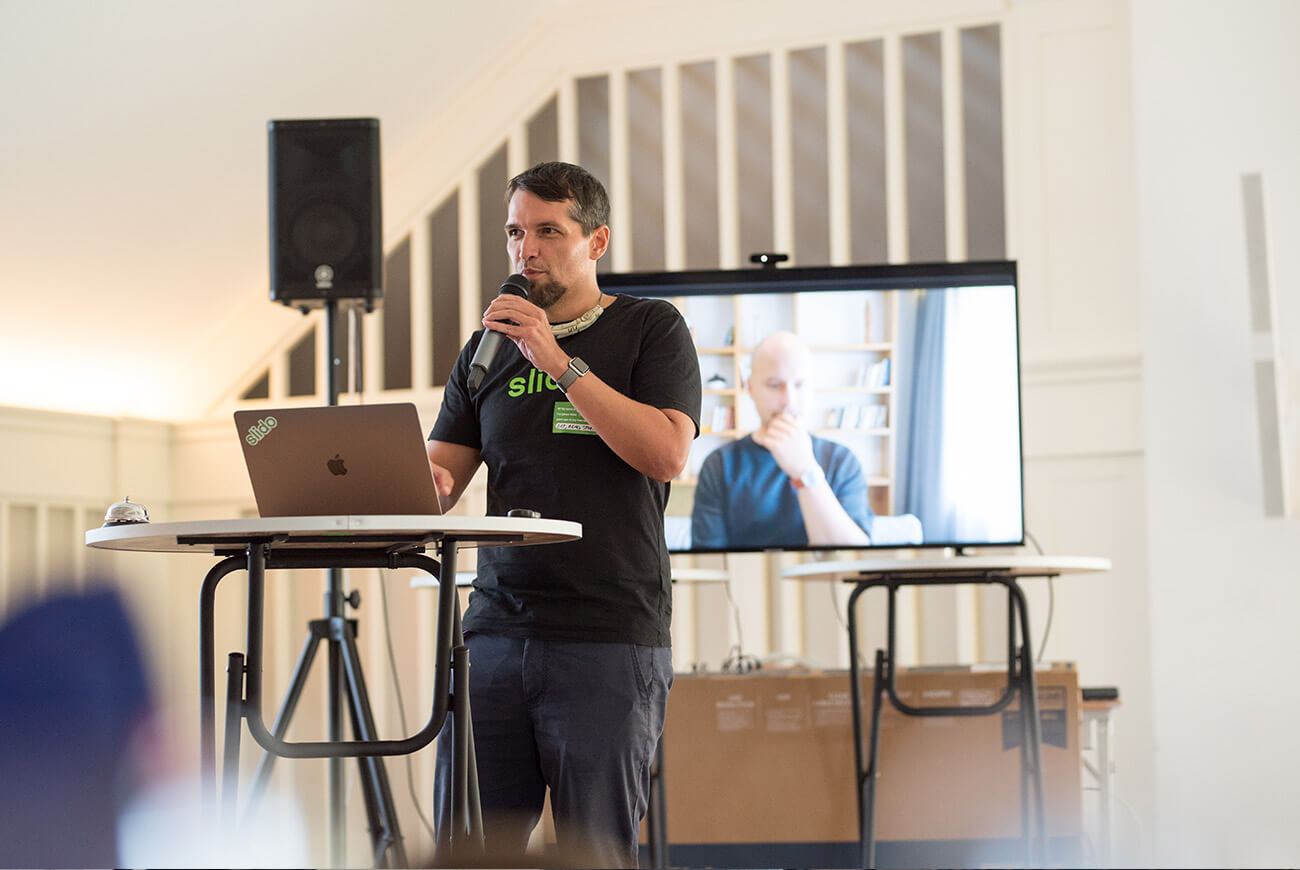Giving your employees a chance to ask questions in a Q&A session should be one of the core elements of your all-hands meetings. It’s a priceless opportunity to learn what your employees think as well as address the most burning issues.
But – running a Q&A session can be a real challenge too.
How do you encourage employees to ask questions in the first place? How do you prevent the Q&A session from becoming toxic or negative?
In this article, we’ll share 9 tips that will help you handle your entire all-hands meeting Q&A with grace, ensure that important questions get addressed, and leave everyone satisfied.
1. Leave enough time for Q&A
For a Q&A session to hit its mark, it cannot feel rushed. Your employees must have enough time to think about and ask their questions. At the same time, they have to feel that their questions are answered properly, not hurriedly.
A rushed Q&A session may even backfire – your employees may feel as though leaders don’t care about their questions and concerns.
Allocate as much as one-third of your all-hands meeting agenda to the Q&A. At Slido, out of our 90-minute-long all-hands meeting, we dedicate 30 minutes to the Q&A session.
2. Give employees a safe space to ask questions
Letting employees ask questions verbally during the meeting is impractical, especially if you run your all-hands in a virtual or hybrid setup. Besides, the majority of people are shy to speak up and ask questions during meetings – especially if it’s in front of the whole company.
Instead, allow your staff to ask via a Q&A platform. They will simply type their questions in the Slido app using their phone or laptop. They can even stay anonymous if they wish to.

Plus, all your employees’ questions will be in one place. This way, it’s easy for people to browse through what others have asked and upvote (or downvote) the questions that have been submitted to make the discussion as relevant as possible.
 Tip
Tip
If you’re hosting your all-hands meeting via a video conference (e.g. Webex), a Q&A tool is a great alternative to collecting questions via the chat feature. It’s way more organized (questions don’t get lost in the thread), easier to manage, and more transparent.
3. Start collecting questions before the meeting
Give your executives as well as your employees time to prepare for the Q&A. Collect your team members’ questions in advance – for example, a few days leading up to the all-hands meeting.
This will give your employees time to think about what they want to ask the executive team. Plus, if someone won’t be able to attend the meeting, they will have a chance to ask their question too!
For our all-hands meetings that take place on Friday, we start collecting questions on Monday. Our internal communications manager Silvia shares the link to the Slido Q&A via our Slack’s #general channel.

Thanks to this approach, our CEO, Peter, and the rest of our executive team, are able to prepare informed answers to complex questions in advance.
Read more: How to Prepare for a Meeting: Step by Step (With Examples)
4. Brief the executives
Before the all-hands Q&A, it’s good practice to prepare the executives for the Q&A and arm them with tactics for handling the employee questions well.
This is where collecting questions in advance helps (see the previous point). If there are already some questions submitted before the meeting, the executives will get the gist of what topics people are most interested in so they can prepare their answers.
As for answering employees’ questions, it’s important to always honor a question with an answer. Transparency is the key to Q&A sessions. It’s disrespectful to employees if executives dismiss their questions or leave them without a proper answer.
Read more: How to Prepare Executives for a Q&A: 9 Tactics
5. Encourage people to ask questions throughout the meeting
Besides the questions that you’ve collected before the meeting, encourage your employees to keep sending their questions into Slido during the meeting as well.
You may also remind them once or twice during the meeting to go to Slido, scroll through the submitted questions, and upvote the ones they support or identify with.
To help the team better follow the discussion, display the questions on the screen.

Once the session gets underway, our clients found it useful to highlight the discussed question in fullscreen to make sure everyone’s attention is focused on the subject.
Apart from questions on Slido, we always recommend taking questions live from the floor to keep the interaction personal.
 Tip
Tip
Turn on moderation to review the incoming questions before they go live for everyone to see. If you plan to review and filter the incoming questions, communicate it to the employees upfront. You’ll avoid getting negative feedback and mitigate their disappointment.
6. Acknowledge the tough questions
Running an open Q&A may sometimes tempt people to ask questions with a negative connotation. However, difficult questions are an opportunity to provide valuable context around decisions that have been made.
Often, it is the tough questions that help create a culture of trust. It’s a brave step from leadership to face the difficult questions, and provide clarification and assurance to employees.
But having an open culture doesn’t mean you have to share every single piece of information. Sometimes, it can be harmful.
There are certain things you shouldn’t or may not want to share publicly – such as confidential information or the team’s salaries. “Be upfront here and let your employees know what areas are off-limits and why they are off-limits. It will help to reduce the team frustrations,” advises our Team Lead, Juraj Holub.
Read more: 5 Ways to Deal With Difficult Employee Questions During Q&A
7. Appoint a moderator to lead the conversation
It’s more engaging to lead a conversation than to have a speaker read the questions from the screen. So, think of your Q&A as an interview and appoint a person to ask the questions to the executives as if it were a natural discussion.
This has worked amazingly well at our own all-hands meetings.
Before the Q&A, our moderator, Juraj, coordinates with the CEO, Peter, to review the submitted questions and prepare the answers. During the interview, Juraj groups the similar ones together to make the conversation flow naturally.

The outcomes are priceless: the moderator has control over the entire session, ensures the strategic questions get discussed, and draws the right answers from our CEO, Peter, and other executives.
8. Address any outstanding questions in writing
You may receive far more questions than you can handle during a limited Q&A slot. What to do with them? Instead of ending the discussion there, take it a step further and answer the remaining questions after the meeting in writing.
Many of our clients lead by example. For instance, the CEO of a large financial institution sends an email with a response to every employee who posted his or her question via Slido with their name.
Marks & Spencer follows another strategy: “We had way more questions than we could handle in 20 minutes, but the beauty of Slido is that we knew that we could take away those 30 or 40 questions that we didn’t get to answer and come back to them later at our team meetings.”
You can also share the answers in your internal communications channels. For example, after our all-hands meeting, our Internal Comms Manager reaches out to the relevant leaders, waits for their responses, and then shares them with our team on Slack.
Read more: What to Do with Unanswered Questions After Your All-Hands Meeting
9. Be brave
As a bonus tip, we’d love to encourage and support you. Yes, it takes courage to open to employees’ questions. Especially to anonymous questions. Above all, it takes buy-in from your company’s leaders.
But, if you want to build a healthy company culture, not shying away from employees’ questions is an important step towards it.
An open Q&A builds trust and helps you create a more transparent and open work environment. You’ll be able to clear up misunderstandings and get insights into sentiments and emotions that may be running beneath the surface.
And all that is worth the effort.
Over to you
A well-facilitated Q&A at your all-hands meeting is a critical tool for ensuring your employees get heard. Use the tips above to run an effective Q&A from start to finish, address the most important issues and build alignment across the entire company.
You can read the original article here.
